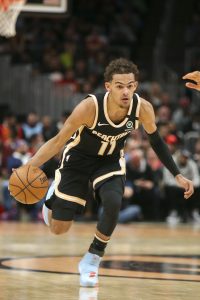Free agency opened less than a week ago, which means that in a typical NBA offseason, today would be about the equivalent of July 5. But in 2020’s warp-speed offseason, the start of training camps are, incredibly, just five days away. Opening night will tip off in less than four weeks.
So even though there may be more free agent signings and trades on the way in the coming days and weeks, it’s not too early to start considering what the on-court impact of this offseason’s roster moves will be.
[RELATED: 2020 NBA Free Agent Tracker]
With that in mind, we’re looking today at which 2020 non-playoff teams have the best chance at returning to the postseason in 2021.
Let’s start in the East, where the Hawks look like perhaps the best candidate to get out of lottery territory. They finished 14th in the conference last season, but an offseason roster overhaul that saw them add Danilo Gallinari, Bogdan Bogdanovic, Rajon Rondo, Kris Dunn, and Onyeka Okongwu – plus a healthy Clint Capela – suddenly makes Atlanta’s roster a whole lot more interesting.
There’s also some intrigue in Washington and Charlotte. Will John Wall‘s return be enough to help buoy the Wizards into a playoff spot? Will the arrivals of No. 3 pick LaMelo Ball and free agent splash Gordon Hayward improve the Hornets significantly?
The other four Eastern teams didn’t necessarily upgrade their rosters in a major way, but the Bulls could be intriguing after hiring Billy Donovan and drafting Patrick Williams, especially if Otto Porter is back to full health. The Pistons, Cavaliers, and Knicks are probably at least a year or two from playoff contention, but if their young talent takes bigger immediate strides than expected, maybe they could make some noise.
Over in the West, there are handful of intriguing candidates to make the move from the lottery to the postseason.
The Warriors, who will have a healthy Stephen Curry back in their lineup to go along with Draymond Green, Andrew Wiggins, Kelly Oubre, and No. 2 pick James Wiseman, are an obvious team to watch. So are the Suns, who have added Chris Paul, Jae Crowder, Langston Galloway, and E’Twaun Moore, and No. 10 pick Jalen Smith to the mix after an 8-0 run during the NBA’s summer restart.
The only major moves the Pelicans and Grizzlies made in free agency involved re-signing their own players, and New Orleans traded away Jrue Holiday. But both teams were knocking on the door of the playoffs in 2020, and young cornerstones like Zion Williamson, Brandon Ingram, Ja Morant, and Jaren Jackson should only get better.
[RELATED: 2020 NBA Offseason Trades]
That leaves the Timberwolves, Spurs, and Kings. Minnesota has a long way to go after finishing last season with a 19-45 record, but adding No. 1 pick Anthony Edwards and having a full season with Karl-Anthony Towns, D’Angelo Russell, Malik Beasley, and Juan Hernangomez shouldn’t hurt.
As for San Antonio and Sacramento, neither team was too far removed from the postseason in 2020. Continued improvements from young players like Derrick White, Dejounte Murray, De’Aaron Fox, and Marvin Bagley should help keep them within striking distance, and both teams got nice draft-lottery additions in Devin Vassell and Tyrese Haliburton.
It’s also worth noting that any team that finishes in the top 10 of a conference has a chance to make the postseason this year as a result of the NBA’s new play-in tournament. The No. 9 and No. 10 seeds will play each other at season’s end, and the winner will face the loser of the No. 7 vs. No. 8 game for the final playoff spot. As a result, more teams than ever could remain in the playoff hunt until late in the season.
What do you think? Which teams do you like to make it back the playoffs this year after missing out in 2020? And which of last season’s playoff teams do you expect to fall into the lottery to make room for those newcomers?
Head to the comment section below to weigh in with your thoughts!

